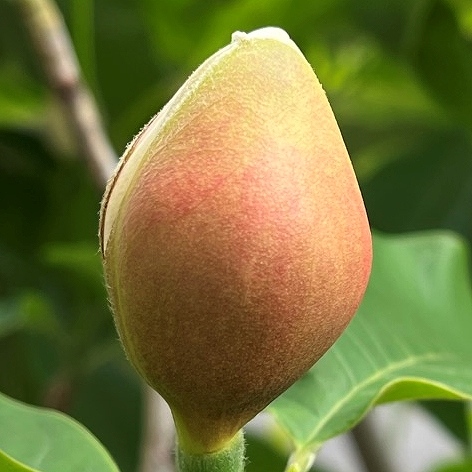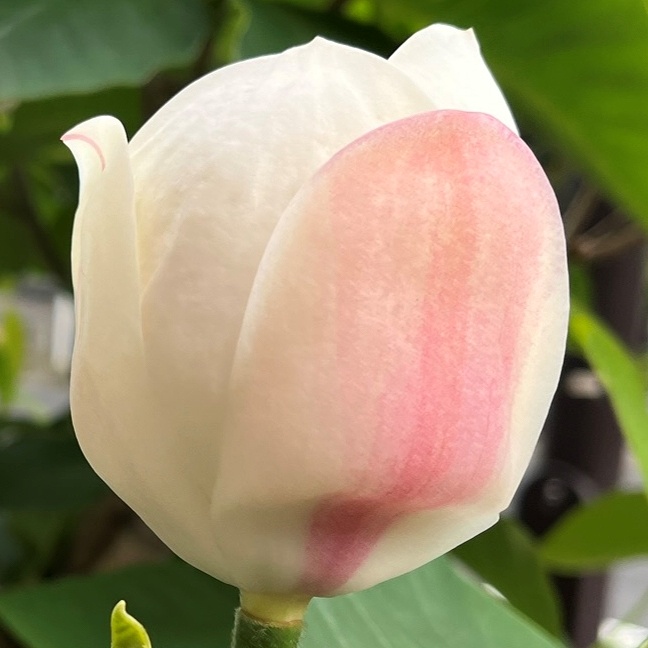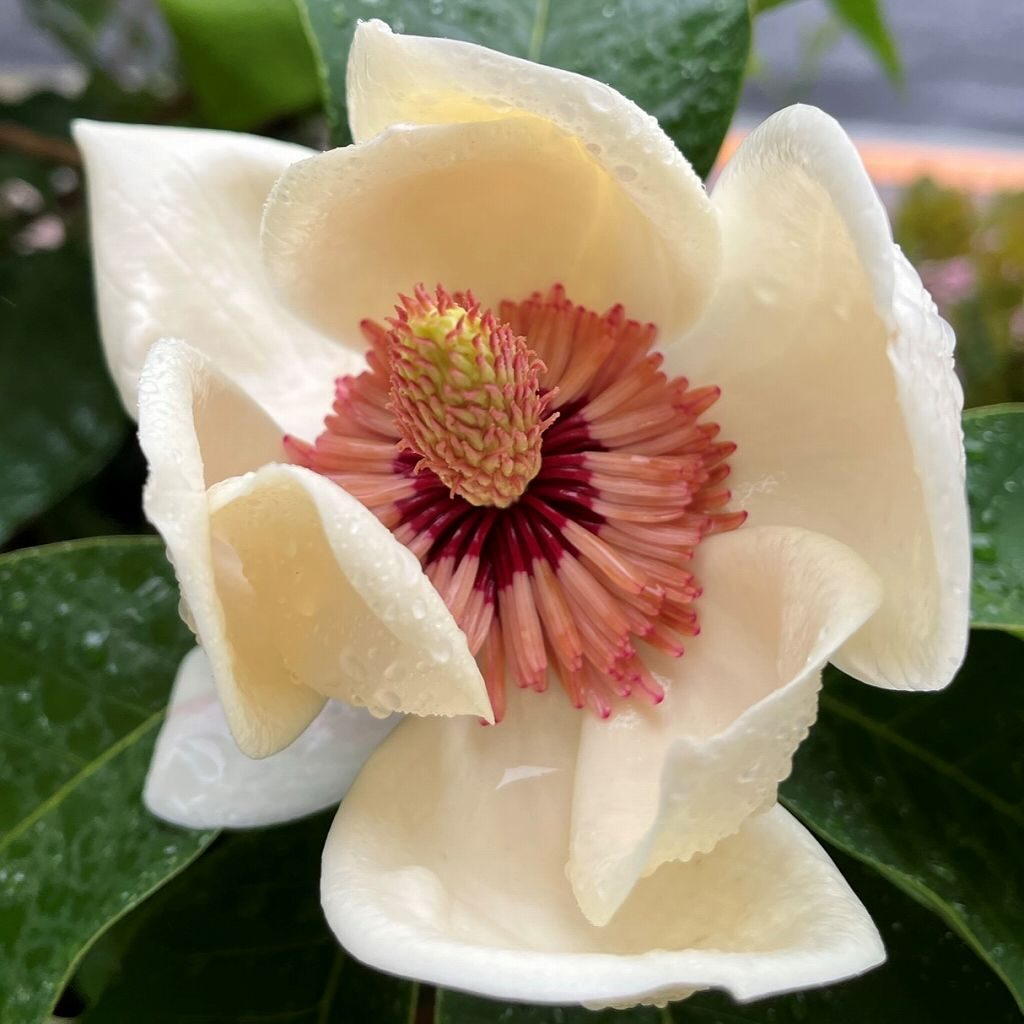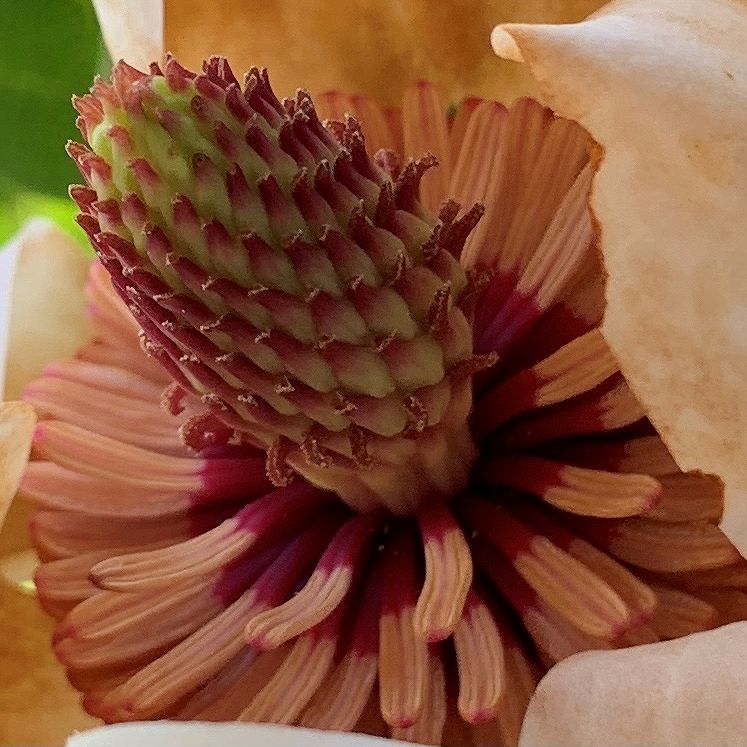オオヤマレンゲは雌しべと雄しべが螺旋状。近縁種や交雑種が同じ名称で栽培されているものの、いずれも清楚な白花に甘い香りが漂います。
Oyama magnolia has spiral female and male lips. Although closely related species and hybrids are cultivated under the same name, they all have a sweet scent in neat white flowers.
【仮名】オオヤマレンゲ, ミヤマレンゲ
【和名】大山蓮華, 深山蓮華
【英名】Oyama Magnolia
【学名】Magnolia sieboldii
【誕生】07/ 11
【開花】05, 06, 07月
【花色】White






オオヤマレンゲ
オオヤマレンゲの生態
オオヤマレンゲはモクレン科の落葉低木。日本では関東から四国、九州まで、国外では中国南東部に分布しています。山間部の冷涼地で自生する一方、神社・仏閣・庭園で観賞用に植栽。近縁種や交雑種が同じ名称で栽培されているものの、いずれも清楚な白花に甘い香りが漂います。
オオヤマレンゲの名前
オオヤマレンゲの和名の由来は奈良県大峰山系(大山)で自生し、花がハスに似ているから。ラテン語の種名は幕末に来日したドイツの医師シーボルトに由来しています。深い山中に自生するので別名「深山蓮華」とも。花被片が9枚以上の八重咲きは「美智子蓮華」とも呼ばれます。
オオヤマレンゲの木
オオヤマレンゲの幹は白っぽい灰色で斜めに伸びます。幹から伸びる枝は緩やかに曲がりくねり、下に弛んで地面に接し、発根して展葉し、新しい株として自立することも。葉は丸みを帯びた卵形で先が尖り、縁にギザギザがなく、裏面に白い毛が密生し、互い違いに枝から生えます。
オオヤマレンゲの花
オオヤマレンゲは展葉後の枝先に花が横向きや下向きに咲きます。花被片は9枚で3枚ずつ輪生し、外側に萼片が3枚、内側に花弁が6枚。花弁の内側には、真ん中に多くの雌しべが螺旋状に立ち上がり、その周りを多くの雄しべが螺旋状に囲みます。花糸は淡赤紫色、葯は淡黄緑色。
オオヤマレンゲの近縁
オオヤマレンゲの基亜種「大葉大山蓮華」は花が大きく、葯が赤紫色で、朝鮮半島から中国北東部にかけて分布。「大山蓮華」の通称で栽培され、茶花にも使われます。また、ホオノキとの雑種「受咲大山蓮華」は、花がクリーム色で大きく、上向きに開花。「玉水」とも呼ばれます。
Oyama Magnolia
Oyama magnolia is a deciduous shrub of the Magnoliaceae family. It is distributed in Japan from Kanto to Shikoku and Kyushu, and overseas in southeastern China. While growing naturally in the cool regions of the mountains, it is planted for ornamental purposes at shrines, temples and gardens. Although closely related species and hybrids are cultivated under the same name, they all have a sweet scent in neat white flowers.
The origin of the Japanese name of Oyama magnolia is that it grows naturally in the Omine Mountains (Oyama) in Nara Prefecture, and its flowers resemble a lotus. The Latin species name comes from the German doctor Siebold, who came to Japan at the end of the Edo period. Since it grows naturally in the deep mountains, it is also known as “Miyama magnolia”. Double-flowered flowers with 9 or more flower pieces are also called “Michiko magnolia”.
The trunk of Oyama magnolia is whitish gray and extends diagonally. The branches extending from the trunk gently bend, slacken down and touch the ground, root and spread leaves, and can become independent as a new strain. The leaves are rounded, oval, pointed, with no jagged edges, dense white hair on the back, and staggered from the branches.
The flowers of Oyama magnolia bloom sideways or downward at the tip of the branch after the leaves are expanded. There are 9 flower pieces, 3 in a circle, 3 on the outside and 6 on the inside. Inside the petals, many female pelvis rise spirally in the middle, and many male pelvis spirally surround it. The filaments are pale reddish purple and the anthers are pale yellowish green.
The basic subspecies of Oyama magnolia, “Ooba Oyama magnolia,” has large flowers and reddish-purple anthers, and is distributed from the Korean Peninsula to northeastern China. It is cultivated under the common name of “Oyama magnolia” and is also used for tea flowers. In addition, the hybrid “Ukezaki Oyama magnolia” with whitebark magnolia has large cream-colored flowers and blooms upward. Also called “Gyokusui”.


